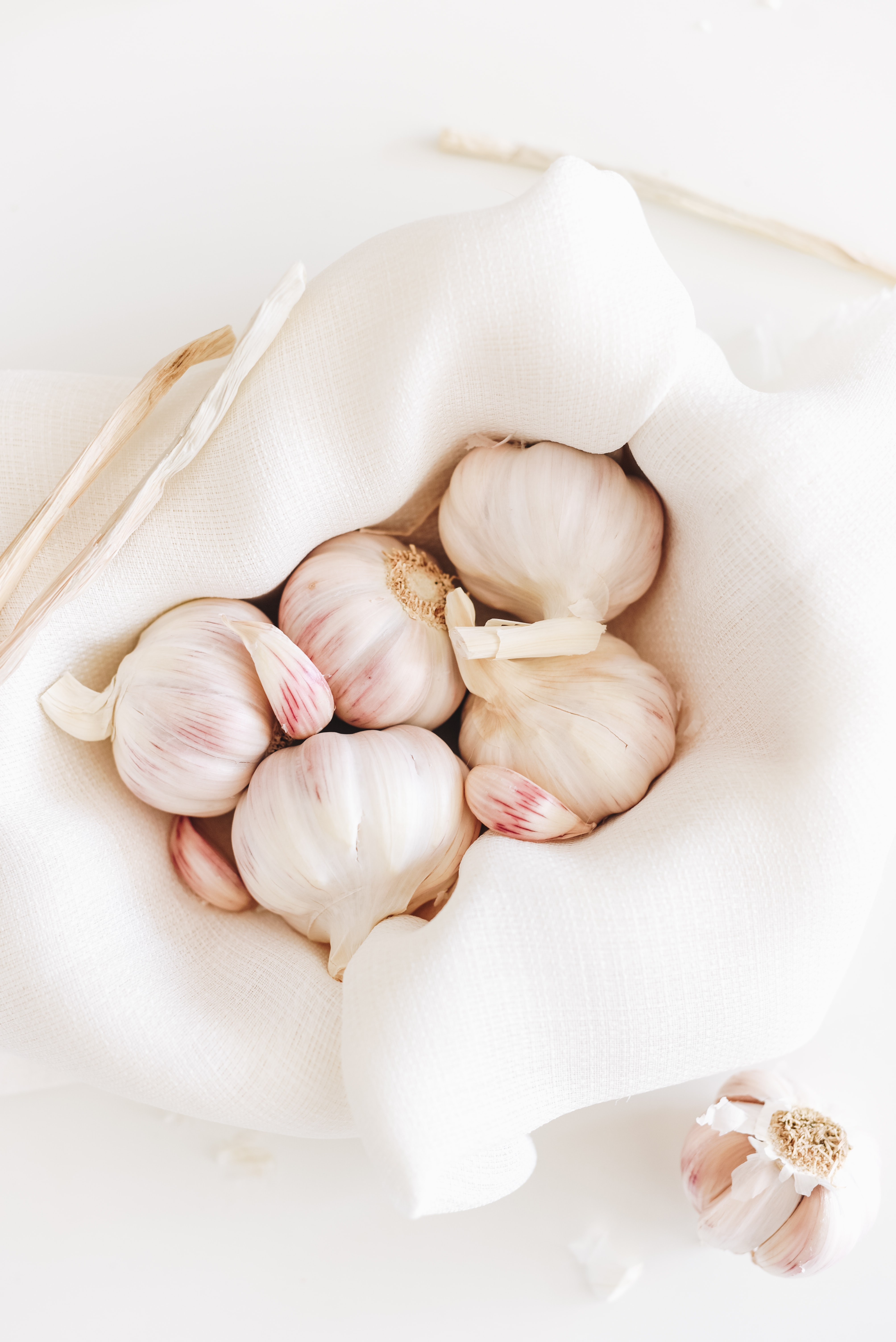A common element in many different cuisines around the world is garlic. It is a native of Central Asia and has been used for thousands of years in both cooking and healing. It is a perennial plant that develops underground as clove-shaped bulbs called bulbs.
The bulbs have a strong, pungent flavour and smell and can be white, pink, or purple in colour. In addition to being used to flavour bread, vegetables, and meats, garlic is utilised in a wide range of meals, such as sauces, marinades, soups, and stews. It is well-known for its positive effects on health, including its capacity to lower blood pressure and cholesterol levels as well as to strengthen the immune system. You might be wondering if garlic is gluten-free, though.
Garlic does indeed naturally lack gluten. It is a kind of bulbous plant from the Allium genus that is frequently used as a spice in food. People with celiac disease or gluten sensitivity can safely consume it because it doesn’t contain any gluten.
Does Garlic Powder Have Gluten In It?
Like whole garlic, garlic powder is naturally gluten-free. It merely consists of minced garlic bulbs, which are gluten-free. Garlic powder may, however, contain gluten if it comes into contact with gluten during processing or packing. Check the label of any product, including garlic powder, to make sure it is marked as gluten-free if you are gluten-sensitive or have celiac disease.
If the product’s label does not expressly mention that it is gluten-free, you might wish to get in touch with the manufacturer to find out whether there is a chance of cross-contamination.
Is Minced Garlic Gluten Free?
Garlic powder, whole garlic, and minced garlic are all naturally gluten-free. It is created by dicing or coarsely cutting fresh garlic bulbs, which are gluten-free. It is nevertheless conceivable for minced garlic to become contaminated with gluten during manufacturing or packaging, as is the case with any food.
Which Food Should Be Avoided If Someone Is Allergic To Gluten?
Avoiding meals with gluten is crucial if you have a gluten allergy. You should stay away from items manufactured with wheat, barley, and rye since these grains contain the protein gluten. This covers products made with wheat, barley, or rye flour, such as bread, pasta, cereal, and baked goods. Processed goods, such as malt vinegar, soy sauce, and some types of seasonings and flavourings, may potentially include hidden sources of gluten. Additionally, barley, which includes gluten, is used in the production of several beer varieties.
It’s also vital to carefully read labels because gluten might turn up in unexpected places like supplements, prescriptions, and vitamins. You can ask the manufacturer for clarification if you’re not sure whether a product includes gluten.
You can still enjoy a wide variety of meals even if you must avoid gluten because there are numerous gluten-free substitutes available, such as rice, quinoa, corn, and potatoes.
How Do You Tell If A Product Contains Gluten?
Reading the label is one of the best methods to find out if a product contains gluten. If gluten is contained in the product, food makers are required by federal requirements to list it on the label. On the ingredient list, look for the words “wheat,” “barley,” and “rye,” as these grains contain gluten. Additionally, some labels may declare that the item is “gluten-free,” which denotes that it contains less than 20 parts per million of gluten.
You can check for the gluten-free certification mark, which is a stamp that appears on the packaging of goods that have been certified as gluten-free by a third-party organisation, in addition to reading the label on the package. When identifying products that are safe for those with celiac disease or food sensitivities, this sign can be useful.
You can ask the manufacturer for extra details if you’re still not sure whether a product includes gluten. On their websites, some manufacturers may additionally provide information regarding the gluten content of their products.
How Careful Do You Need To Be When Preparing Gluten Containing And Gluten Free Foods In The Same Kitchen?
Take precautions to avoid cross-contamination if you are making both gluten-containing and gluten-free dishes in the same kitchen. When gluten-free foods come into contact with gluten, whether directly or through the sharing of utensils, surfaces, or cooking equipment, cross-contamination occurs. For people with celiac disease or gluten sensitivity, even trace levels of the protein can result in an adverse reaction.
Follow these recommendations to avoid cross-contamination:
- Separate cutting boards, cutlery, and cooking tools should be used for foods containing and lacking in gluten.
- Use different containers to store gluten-free and gluten-containing items, and keep them in separate sections of the kitchen.
- For gluten-free bread, think about using separate toasters or toaster ovens.
- Use distinct containers for gluten-free and gluten-containing flours when preparing meals with items that are shared, such as flour.
- Prior to handling gluten-free foods, properly wash your hands. You should also make sure that all work surfaces and utensils have been cleaned.
You can contribute to keeping your gluten-free meals safe to eat and free of gluten by taking these steps.
Relevant Articles
Is Gluten-Free Bread Suitable For A Keto Diet?
Gelatin vs Gluten: What Is The Difference?
Are Gorditas Gluten Free? A Complete Guide On What To Look Out For
Are Yakisoba Noodles Gluten Free? What Are The Alternatives?

Comments are closed